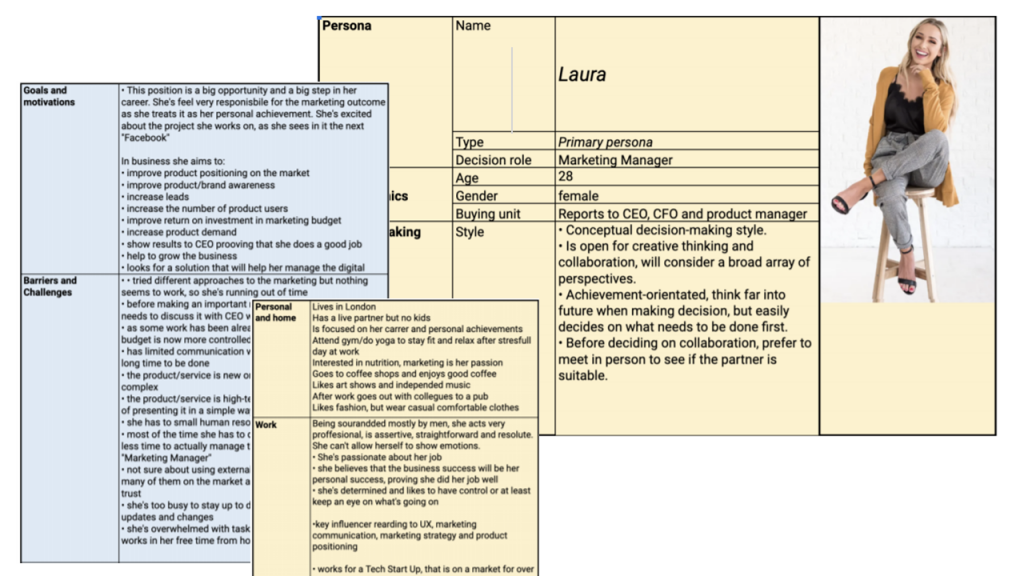4 Simple Step to Set-Up a Lead Scoring System To Find your Ideal Customers

Leads are among the most valuable assets that you can collect as a business owner. These are the people that arrive on your website, visit your social media page, or check out your brick-and-mortar store.
They’re interacting with your business, so there is a chance they will become a customer, but you need to figure out how to convert them first.
So, how do you know which of the people who interact with your business you should be spending the most time and money on?
What does it take for you to identify an incredible opportunity for your business?
It all starts with lead scoring.
Lead scoring is the practice of identifying the potential customers your business interacts with, based on their likelihood to convert or generate positive results for your business.
Here are some of the steps that you can take to develop an effective lead scoring system for your startup.
Step 1: Get to Know Your Ideal Customer

What kind of clients would really benefit from your product?
If you’re a startup business selling accounting software, you’re naturally more likely to get sales with business leaders than from stay-at-home moms.
A solid customer profile will help you differentiate the leads worth pursuing from the ones that only waste resources and time.
To create a customer profile or buyer persona, make a list of all the characteristics your ideal customer is likely to have.

Source: Lnet Digital, Target Persona Template
In our example, based on the features you offer, you might decide that your ideal customer is a small business earning up to ten million dollars, preferably from your own region.
In that case, you can assign points for location, size, revenue, even a specific industry.
According to priority, revenue and size might carry fifty points each, whereas industry and location may be worth thirty and twenty, respectively.
An ideal client will score points in all those categories, for a total of 150 points.
However, if a company earns less, or even substantially more than your desired revenue, it will lose points.
If it is also located in the wrong region or it is much bigger than your startup can handle, that might be a sign for your sales team not to pursue them.
Moreover, you could have a separate profile for the business leader that’s buying an accounting tool for his team and one for the financial expert who is buying their own solutions.
Knowing how to differentiate between potential customers will help you make your sales pitches more relevant to each client.
Step 2: Understand Your Mission/Goal

Most people know that if they want to successfully score leads, they need a solid understanding of their target audience.
However, you also need to know everything there is to know about your business and what you’re trying to accomplish.
A solid brand mission gives you a way to connect with your customers and build relationships that generate trust — and conversions.
For instance, a company selling collaboration software might have the mission of getting rid of cluttered email inboxes for their customers.
Since that is your goal, too, you can present the potential benefits of your product to your customers in a way they’ll understand.
Knowing what makes your business different will also help you to add more depth to your buyer personas.
For instance, if your aim is to eliminate the clutter from email inboxes, it makes sense that you’d look for customers with teams that work mainly in the digital world rather than those relying on in-office meetings and face-to-face conversations for collaboration.
Aligning your USPs to your target audience’s pain points will show you where you should be focusing the majority of your attention.
Step 3: Know Your Buyer’s Journey

Another thing to keep in mind when developing an effective lead scoring system, is what your everyday customer’s buyer’s journey looks like. Think about all the possible behaviors your leads can engage in to show that they’re connected with your brands. This could include everything from social media visits and shares, to email replies and clicks, or even just the amount of time a person spends on your website.
For instance, you can look at the kind of content your prospect has interacted with on your website to assign points based on where they are in their buyer’s journey. If they have already looked at your pricing page or filled out a demo request, this means they have likely reached the decision-making stage.
Such users will earn themselves a higher score than those who have only looked at awareness-raising content, such as posts answering industry questions. You can also assess a prospect’s interest based on the number of interactions they’ve had with your brand.
Experts say that it takes multiple touchpoints (up to eight) for a customer to get from the point of awareness, when they know they have a problem, to a purchase.
Every time someone in your community engages in one of those valuable activities that increases the relationship they have with your brand, you can add another point to their value score. The amount of time they’ve invested in interacting with your brand indicates their intent.
A customer that’s already opened your emails, connected with you on the phone, had a demo over video chat, and experimented with your software through a free trial is far more likely to convert than someone who only clicked on one of your social media ads. In addition to personal communication channels, businesses can also enhance their social media advertising strategy by saving ads by using fb ad library, TikTok ads, and ads on other social media platforms.
Step 4: Equip Your Sales Team
Give your sales team a set of criteria that qualify a lead to determine it as being worth your time.
Your team will want to determine the prospect’s needs, their contact’s authority to make decisions relevant to you, as well as the potential timeline of the purchase.
This information can be obtained through an interview, with questions like:
- What challenges is your team facing at the moment?
- Can you describe the decision-making process in your company for purchases like this one? Do you make the final decision or do you play a different role?
- When does the solution have to be implemented?
However, similar questions can also be posed in an online form, allowing for the automatization of lead scoring.
To determine their contact’s authority, for instance, you can ask a question like this:
- Are you the main decision-maker for purchases like this one?
I am. (2 pts)
b. I am not, but I participate in such decisions. (1 pts)
c. I am not involved in making purchasing decisions. (0 pts)
Or, you can determine the timeframe by including a question like this one in your form:
- By when do you need a new accounting system?
As soon as possible. (2 pts)
b. Within the year. (1 pts)
c. In the next 2-5 years. (0 pts)
You can even use apps and online software to help you identify potential leads automatically, and filter the right kinds of leads to the correct sales team, especially if you deal with multiple customer personas.
For instance, Hubspot offers this free lead-scoring calculator that takes into account some of the criteria we’ve discussed.
Remember to Refine and Tweak
A lead scoring system isn’t something you can simply set and forget in your business. As consumer trends change and you learn more about your target audience, your measurement strategies will evolve.
Having a schedule that reminds you to review the performance of your lead scoring system and make adjustments will improve your results over time.
Ask yourself if any of your low-scoring leads are converting or if there are high-scoring leads that aren’t buying your product. Then, adjust your strategy accordingly.
No matter how good your scoring system is now, there’s always room to optimize and improve as you collect more data.
How to Score Leads with LeadGen Forms
LeadGen App provides you with tools to create custom lead capture forms that can score your incoming leads based on the responses are providing. This could be in multi-step lead capture form that asks qualified question about budget, type of industry, service needs, etc.
You can assign a value to each choice and create a custom choice value to calculate a lead score. This score shows up in your lead dashboard, for each individual lead that submitted the form and allows you to get an understanding about the quality of the lead before continuing the sales process. See the video below on how to use lead scoring in LeadGen App forms:
Here is another article on how to build a calculator form in LeadGen App using the choice value feature.
—
Content contribution
Lisa Michaels is a freelance writer, editor, and a thriving content marketing consultant from Portland. Being self-employed, she does her best to stay on top of the current trends in business and tech. Feel free to connect with her on Twitter @LisaBMichaels.





